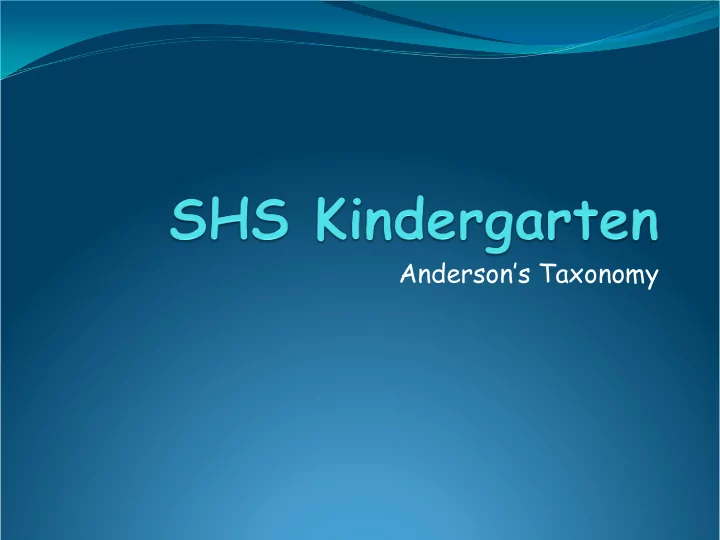

Anderson’s Taxonomy
What have we learned? All students benefit from higher levels of engagement and higher level questioning. We have a heightened awareness of the importance of open - ended questioning. We are consciously making an effort to incorporate higher order thinking in all curriculum areas. Though difficult to measure, we have noticed an increase in the level of engagement and enthusiasm in our classrooms. Academic Choice has been an effective way to provide these experiences for our students.
Challenges Younger children need TIME to process and practice these skills at a developmentally appropriate pace. Children at this age need multiple opportunities to rehearse, review and reflect. Kindergarten students need practice on how to process and apply information in different ways. This requires TIME.
21 st Century Unit- Transportation Subject: Science Conceptual Lens: Motion and Energy Critical Content: Literature and media, physics, creative arts and math. Generalizations: Students will understand that: - People depend on transportation to take them from place to place. - Different types of transportation move at different speeds. - Motion and power create energy. - Energy causes objects to move.
Questions Remembering: - What kind of transportation do you use most often? - What is power and where does it come from? Understanding/Applying: - Do you have a toy that can move because of energy? How does energy cause it to move? - How did the vehicle you created move?
Analyzing: - Why do many forms of transportation use wheels? - Why do airplanes move faster than cars? - What worked and what did not work when trying to get your vehicle to move? Evaluating: - Why is transportation important? - How does where you live determine what form of transportation you would use?
Cars
Boats
and Planes
Recommend
More recommend